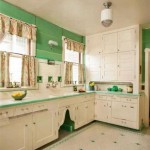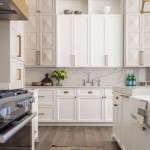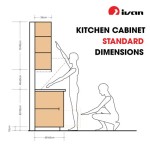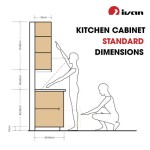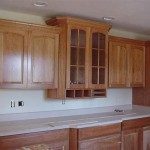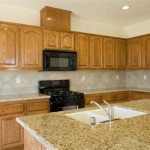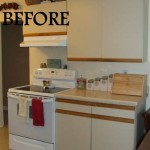DIY Kitchen Cabinet Projects: A Comprehensive Guide
Kitchen cabinets are a significant element of any kitchen, contributing substantially to both its functionality and aesthetic appeal. Replacing or upgrading existing kitchen cabinets can be a considerable expense, leading many homeowners to explore do-it-yourself (DIY) projects as a cost-effective alternative. DIY kitchen cabinet projects encompass a wide range of options, from simple refinishing tasks to complete cabinet construction. Successfully undertaking these projects requires careful planning, the acquisition of necessary skills, and a commitment to meticulous execution.
This article provides a comprehensive overview of various DIY kitchen cabinet projects, outlining the steps involved, necessary materials and tools, and potential challenges. It aims to equip homeowners with the information needed to make informed decisions and successfully execute their chosen projects. Understanding the scope of the project, assessing existing skills, and carefully considering budget constraints are crucial preliminary steps. Failure to adequately address these factors can lead to project delays, cost overruns, and unsatisfactory results.
Refinishing Existing Kitchen Cabinets
Refinishing is a popular DIY kitchen cabinet project, especially for cabinets that are structurally sound but visually dated. The process involves removing the existing finish, repairing any damage, and applying a new finish. This method allows homeowners to update the look of their kitchen without the expense and disruption of replacing the entire cabinetry.
The first step in refinishing is thorough preparation. This includes removing all cabinet doors and drawers, and carefully labeling them to ensure they are reinstalled in their original locations. All hardware, such as hinges and knobs, must also be removed. Following removal, the cabinet surfaces must be thoroughly cleaned with a degreaser to remove any accumulated grease, dirt, and grime. Abrasive cleaners should be avoided as they can damage the wood.
Once the cabinets are clean, the existing finish must be removed. This can be done using a chemical stripper, sanding, or a combination of both. Chemical strippers are effective for removing multiple layers of paint or varnish, but they require careful handling due to their potentially hazardous nature. Adequate ventilation and appropriate protective gear, including gloves and eye protection, are essential when using chemical strippers. Sanding is a more labor-intensive method, but it allows for greater control over the removal process. Different grits of sandpaper are typically used, starting with a coarser grit to remove the bulk of the finish and progressing to finer grits for a smoother surface. Orbital sanders significantly reduce the time and effort required for sanding.
After the existing finish is removed, any damage to the wood, such as dents, scratches, or gouges, should be repaired. Wood filler can be used to fill in imperfections, and once dry, it should be sanded smooth to blend seamlessly with the surrounding wood. Following repairs, the cabinets should be thoroughly vacuumed and wiped down with a tack cloth to remove any remaining dust or debris.
The final step in refinishing is applying the new finish. This can be done using paint, stain, or varnish. Paint provides a solid color and is available in a wide range of sheens and colors. Stain enhances the natural grain of the wood and is often used in conjunction with a clear topcoat for protection. Varnish provides a durable, protective coating and can be applied over painted or stained surfaces. When applying any finish, it is important to follow the manufacturer's instructions carefully. Multiple thin coats are generally preferable to a single thick coat, as they result in a smoother, more durable finish. Sanding lightly between coats can further improve the smoothness of the finish.
Replacing Cabinet Doors and Drawer Fronts
Replacing cabinet doors and drawer fronts is another DIY option for updating the look of kitchen cabinets. This approach is particularly effective when the cabinet boxes are structurally sound but the doors and drawer fronts are damaged, outdated, or simply no longer aesthetically pleasing. Replacing doors and drawer fronts offers a significant visual impact without necessitating a complete cabinet replacement.
The first step in this project is to accurately measure the existing doors and drawer fronts. Measurements should be taken to the nearest eighth of an inch to ensure a proper fit. It is also important to note the type of hinge system used, as this will affect the type of doors that can be installed. There are various sources for purchasing replacement doors and drawer fronts, including online retailers, home improvement stores, and custom cabinet shops. When ordering, it is crucial to specify the desired style, material, finish, and hinge bore locations.
Upon receiving the new doors and drawer fronts, they should be carefully inspected for any damage or defects. Before installation, it may be necessary to apply a finish, such as paint or stain, to match the existing cabinets or achieve the desired aesthetic. Priming is generally recommended before painting to ensure proper adhesion and a uniform color. As with refinishing, multiple thin coats of finish are preferable to a single thick coat.
Installation of the new doors and drawer fronts involves attaching the hinges to the doors and then attaching the doors to the cabinet boxes. It is important to use the correct type and size of screws to avoid damaging the wood. Careful alignment is crucial to ensure that the doors hang straight and close properly. Adjustment screws on the hinges can be used to fine-tune the alignment. Drawer fronts are typically attached to the drawer boxes using screws or adhesive. It is important to pre-drill pilot holes to prevent the wood from splitting. Once the doors and drawer fronts are installed, hardware, such as knobs or pulls, can be attached to complete the project.
Building New Kitchen Cabinets
Building new kitchen cabinets is the most complex and challenging DIY option, but it also offers the greatest flexibility in terms of design and customization. This project requires a high level of woodworking skill, access to specialized tools, and a significant time commitment. However, the satisfaction of creating custom cabinets tailored to specific needs and preferences can be immense.
The first step in building new cabinets is to develop a detailed design plan. This plan should include precise measurements of the available space, the desired layout, and the dimensions of each cabinet. It is important to consider factors such as countertop height, appliance placement, and storage needs. CAD software or online kitchen design tools can be helpful in creating a professional-looking plan. Once the design is finalized, a materials list should be compiled, specifying the type and quantity of wood, hardware, and other supplies needed.
Cabinet boxes are typically constructed from plywood or particleboard. Plywood is generally more durable and dimensionally stable, but it is also more expensive. Particleboard is a more affordable option, but it is more susceptible to moisture damage. The sides, top, bottom, and back of the cabinet box are cut to size and assembled using screws, nails, or wood glue. Pocket screws are a popular choice for cabinet construction as they provide a strong, concealed joint.
Face frames, which are typically made from solid wood, are attached to the front of the cabinet boxes to provide structural support and a finished appearance. The face frame consists of stiles (vertical pieces) and rails (horizontal pieces). These pieces are joined together using mortise-and-tenon joints, dowel joints, or pocket screws. The face frame is then attached to the cabinet box using screws or glue.
Doors and drawer fronts can be constructed using a variety of techniques, including raised panel, shaker, or slab construction. Raised panel doors involve creating a decorative panel that is fitted into a frame. Shaker doors have a simple, clean design with a flat panel and a minimal frame. Slab doors are simply flat pieces of wood or composite material. The doors and drawer fronts are attached to the cabinet boxes using hinges and drawer slides. Various types of hinges and drawer slides are available, each with its own advantages and disadvantages.
The final step in building new cabinets is applying a finish. As with refinishing, this can be done using paint, stain, or varnish. The finish protects the wood from moisture and wear and tear, while also enhancing its aesthetic appeal. Multiple thin coats of finish are generally recommended.
Undertaking DIY kitchen cabinet projects requires careful planning, attention to detail, and a commitment to quality. While some projects, such as refinishing, may be relatively straightforward, others, such as building new cabinets, demand significant skill and experience. Homeowners should carefully assess their abilities and resources before embarking on any DIY project. Furthermore, it is crucial to research various techniques, tools, and materials to ensure a successful outcome. By following these guidelines, homeowners can transform their kitchens and achieve significant cost savings compared to professional services.

34 Diy Kitchen Cabinet Ideas

Diy Kitchen Cabinets 25 And Easy Ideas For An Update Joyful Derivatives

Diy Kitchen Cabinets 25 And Easy Ideas For An Update Joyful Derivatives

Budget Friendly Diy Kitchen Cabinet Ideas The Turquoise Home

Diy Budget Open Kitchen Cabinets Build Your Own In A Weekend

Kitchen Cabinet Designs For Contemporary Cooking Spaces

21 Diy Affordable Ways To Redo Kitchen Cabinets Extra Space Storage

20 Diy Painted Kichen Cabinet Ideas A Cultivated Nest

Budget Friendly Diy Bungalow Kitchen Makeover With Painted Cabinets I

10 Simple Ideas To Update Your Kitchen Cabinets Jenna Sue Design
Related Posts

